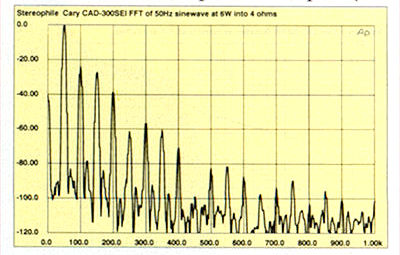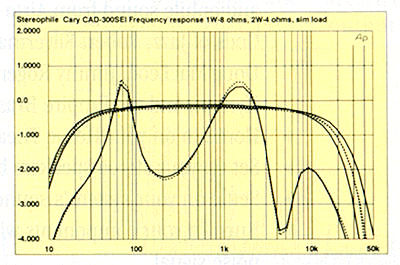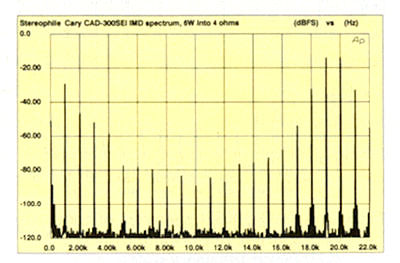Wikipedia says
The theoretical rigor of Shannon's work superseded the ad hoc methods that had prevailed previously. Howard Gardner called Shannon's thesis "possibly the most important, and also the most noted, master's thesis of the century."[11]
The theoretical rigor of Shannon's work superseded the ad hoc methods that had prevailed previously. Howard Gardner called Shannon's thesis "possibly the most important, and also the most noted, master's thesis of the century."[11]
I am very comfortable with these fitting in my "rare incredible" clause, even if I need to modify the word Ph.D out of it.
I had in my head that Planck's thesis was super short, but I may have been mistaken. Definitely that was an era when a thesis was much more significant. Anyways, loads of theses float through with not a blink of an eye.
I had in my head that Planck's thesis was super short, but I may have been mistaken. Definitely that was an era when a thesis was much more significant. Anyways, loads of theses float through with not a blink of an eye.
Howie, do you agree with the Bill Whitlock application note on Jensen Transformers' website, that states the best way to choose Zobel compensation parts, is to optimize the output waveform in the time domain, seeking a Bessel response (zeta = 0.866)? Or do you tinker with Zobel parts while monitoring in the frequency domain?
Hey Mark!
I usually started with Bill Whitlock's suggested values (or whoever determines them at Jensen), and since each application poses a different load reactance, especially when driving long lines, sweep and watch the response at the far end. Vary the cap to change the freq, vary the resistor to flatten the peak. I guess this would also give the cleanest square-wave but watching the time domain response it is less intuitive for the purpose of adjusting the component values, at least to me.
Simplistic, I know, but quick and pretty transparent sounding. I used this technique to set up long transmission lines across factory production floors, all over campus buildings; using transformers used to be the only way I could clean the noise floor up. Up to several hundred feet it was easy to get the S/N in the high 90s dB re:+4 dBm, and basically flat to 40 KHz, the HF limit of a ST1510 (the tool of choice in the 1980s).
Analog purists will be disgusted to hear I switched to using digital links in the late '80s, cheaper cabling (RG-6), a single video isolation transformer....first using PCM-F1s, then orphaned 1610s, and since 2010 lots of AoIP choices, now with AES67, some capable of 96 KHz, 24 bit. Leave your Zobels at home! I have yet to implement a composite FM STL using AES67, but it is now possible...
Different approaches for different situations...there is nothing hifi about a grungy noise floor.
Cheers,
Howie
Howie,
I have gone to fiber to distribute Stadium audio and control. For some strange reason it is better quality at lower cost to spread out the amplifier rooms and shorten the loudspeaker cabling. Ever price a few hundred thousand feet of ten gauge loudspeaker cable? At least double that to cover labor.
At first used AES 3 before commercial products (Dante) became available.
A stadium empty can have a noise level around 35 dBA. The noise level should be 20 dB below that to not be noticed. (Things like hum being narrow band are not masked by louder wide band noise.)
For some reason it is nice to have the reinforced sound at least 10 dB louder than crowd noise. Then there is another 10 dB minimum above that for enough dynamic range to reduce perceived distortion. A quiet stadium crowd runs 85 dBA. So that requires 15 bits. A bit of a trade secret as to how loud a crowd really can get. I see numbers often given in sports circles that are complete nonsense. But although some folks claim 24 bits of dynamic range, that doesn't really happen and fortunately isn't needed. Of course 16 bits isn't really enough.
I have gone to fiber to distribute Stadium audio and control. For some strange reason it is better quality at lower cost to spread out the amplifier rooms and shorten the loudspeaker cabling. Ever price a few hundred thousand feet of ten gauge loudspeaker cable? At least double that to cover labor.
At first used AES 3 before commercial products (Dante) became available.
A stadium empty can have a noise level around 35 dBA. The noise level should be 20 dB below that to not be noticed. (Things like hum being narrow band are not masked by louder wide band noise.)
For some reason it is nice to have the reinforced sound at least 10 dB louder than crowd noise. Then there is another 10 dB minimum above that for enough dynamic range to reduce perceived distortion. A quiet stadium crowd runs 85 dBA. So that requires 15 bits. A bit of a trade secret as to how loud a crowd really can get. I see numbers often given in sports circles that are complete nonsense. But although some folks claim 24 bits of dynamic range, that doesn't really happen and fortunately isn't needed. Of course 16 bits isn't really enough.
Last edited:
Harmonic distortions and intermodulation distortions are not independent variables, they are mathematically directly related.
Thanks,
Hans
Yesterday afternoon had the opportunity to talk to someone who had the opportunity to directly the compare the sound of a Cary CAD0300SEI with a Bryston 3B-ST, the two amplifiers Cheever used as examples. The person emphatically stated, "Nobody who compared the two amplifiers in the same room at the same time would choose the Bryston over the Cary!"
Don't know why that would be myself, guess its something that has to be heard to be understood.
Don't know why that would be myself, guess its something that has to be heard to be understood.
Such utterances are always worth ignoring.The person emphatically stated, "Nobody who compared the two amplifiers in the same room at the same time would choose the Bryston over the Cary!"
Mark,
sorry but there is no room for sonic impressions and personal taste in the Land of the Lord of the Blue Screen.
So these claims are speculations and biases only, no proves , no measurements to confirm.
sorry but there is no room for sonic impressions and personal taste in the Land of the Lord of the Blue Screen.
So these claims are speculations and biases only, no proves , no measurements to confirm.
Howie,
I have gone to fiber to distribute Stadium audio and control. For some strange reason it is better quality at lower cost to spread out the amplifier rooms and shorten the loudspeaker cabling. Ever price a few hundred thousand feet of ten gauge loudspeaker cable? At least double that to cover labor.
At first used AES 3 before commercial products (Dante) became available.
A stadium empty can have a noise level around 35 dBA. The noise level should be 20 dB below that to not be noticed. (Things like hum being narrow band are not masked by louder wide band noise.)
For some reason it is nice to have the reinforced sound at least 10 dB louder than crowd noise. Then there is another 10 dB minimum above that for enough dynamic range to reduce perceived distortion. A quiet stadium crowd runs 85 dBA. So that requires 15 bits. A bit of a trade secret as to how loud a crowd really can get. I see numbers often given in sports circles that are complete nonsense. But although some folks claim 24 bits of dynamic range, that doesn't really happen and fortunately isn't needed. Of course 16 bits isn't really enough.
Hey Ed,
That totally makes sense! For galvanic isolation reasons if nothing else I wish fiber had been affordable in the 90's and 00's. I had the devil of a time isolating IEE488 data lines from production equipment with wildly bouncing ground potentials. Fiber worked well for that, but as you point out, HQ audio 16 bits or greater fiber links are a more recent advancement.
In a related issue we are building Dolby Atmos rooms and discussing whether amps should be located in the central machine room as per the norm or powered speakers at each of the 7.4.1/2 locations. Our preferred speaker vendors will have to work with us for some customs if the latter, and we need to decide either analog or digital audio distribution? Some of these studio owners, although wanting to be Atmos-certified also are ardent analog purists for stereo recording, with fully analog chains and some even still using refurbished Studer, MCI, and Otari multi-tracks which is fine...but of course Atmos is not an analog format so they want the best of both worlds...and so it goes.
Cheers!
Howie
Yesterday afternoon had the opportunity to talk to someone who had the opportunity to directly the compare the sound of a Cary CAD0300SEI with a Bryston 3B-ST, the two amplifiers Cheever used as examples. The person emphatically stated, "Nobody who compared the two amplifiers in the same room at the same time would choose the Bryston over the Cary!"
Don't know why that would be myself, guess its something that has to be heard to be understood.
I sincerely believe that SOMEBODY who compared the two amplifiers in the same room would choose Cary over Bryston because that Cary is one of very few amplifiers with its own distinctive sound


source:
Cary Audio Design CAD-300SEI integrated amplifier Measurements | Stereophile.com
[JA always wants for us to link the source not only the images]
Oh, oh, almost forgot that wonderful intermodulations

Last edited:
That isn't what was said though, are you biased per chance?Mark,
sorry but there is no room for sonic impressions and personal taste in the Land of the Lord of the Blue Screen.
So these claims are speculations and biases only, no proves , no measurements to confirm.
Masters of ears sometimes visit me to pass the A/B level matched test. The mastership is usually gone, sometimes they even do not catch that the tweeter was switched off.
Indeed, that's the reason why now I trust measurements only.
And of course the Land of the Lord of the Blue Screen has become my absolute reference.
And of course the Land of the Lord of the Blue Screen has become my absolute reference.
I don't think you get it at all, correlating a preference of sound with measurement on outputs of amplifiers with no knowledge of speakers being used nor measurement of the acoustic output is both confusing and meaningless.No, thanks to the masters of measurements I finally got it.
No, thanks to the masters of measurements I finally got it.
Yes, he was being as narrow minded and condescending as you.
I don't think you get it at all, correlating a preference of sound with measurement on outputs of amplifiers with no knowledge of speakers being used nor measurement of the acoustic output is both confusing and meaningless.
There is no room for preference of sound, only measurements matter.
Here is clearly stated how to measure an amplifier
Pass ACA Class A Power Amplifier Review | Audio Science Review (ASR) Forum
Do you want to question the master of masters?
And it is truly unacceptable that someone disreputes the master of masters.
Somewhere I have read:
".... there's all sorts of funny stuff going on there. Note that JohnYang1997 who has designed many of the more well known Topping products has thrown shade, sometimes in deniable ways, at various competitors such as Geshelli and Schiit. It's only recently that this account has been identified as a manufacturer, and even then on ASR, it's not specifically identified what manufacturer."
And also:
"The Project Polaris was designed by a long time member and post contributor. Hence he was treated with kid gloves."
Last edited:
I sincerely believe that SOMEBODY who compared the two amplifiers in the same room would choose Cary over Bryston because that Cary is one of very few amplifiers with its own distinctive sound
source:
Cary Audio Design CAD-300SEI integrated amplifier Measurements | Stereophile.com
[JA always wants for us to link the source not only the images]
Oh, oh, almost forgot that wonderful intermodulations
At the risk of destroying whatever remaining respect if any I may have here, I have a story about (nearby) Cary Audio: Some of you may remember Richard Clark's amplifier challenge. While I feel there were issues with the whole idea, namely how poorly people hear under stress or time constraints, especially in an unfamiliar environment, the basic premise was not that there were no differences, but that they were small enough below clipping that people had trouble hearing them.
When Cary was first getting going, we got a call from Cary to audition their new amps, of course ultimately they wanted to supply us with amps for our mastering suites. Richard agreed to the audition if he could bring a stock Crown amp and do a comparison. If we could detect no difference, or if the Cary's were superior he agreed to purchase amps for all our suites, which would have been big $$ for the new company.
Richard and I arrived at the showroom with a Crown amp, equalizer and a ST1510. The system with the Cary amp and quite large speaker I cannot remember the model of did sound fantastic! After admiring the setup for a while we swept the system at the speaker, and it showed a response like that Pavel posted. I dialed that into the Crown's equalizer and all three of us did the AB for hours with all sorts of program material. The dealer couldn't tell the difference nor could we.
The take-aways from that day for me were:
1) That tube amp's high output impedance caused severe frequency response errors. It is no wonder people have to mix and match tube amps and speakers to get a combo where the errors are complimentary.
2) When equalized similarly there was very little if any difference despite the large tube vs. SS DF difference, so speaker damping by the amp in other than frequency response domain is not a significant factor in SQ.
3) Despite the huge distortion improvement with the SS Crown amp, none of us could consistently perceive a distortion difference, so perhaps program dependent human distortion perception is not so great. Later testing showed that with repeated single-tone training mid-band at certain levels I could hear >0.25% but not less than that. In complex program material all bets are off. YMMV.
Bottom line: those amps are beautifully crafted and with the right speakers sound great! I don't think they can be called neutral or accurate, but to many non-engineering types (i.e. 99% of their market) that matters not one bit.
Another long post, I really am avoiding work today...
Howie
p.s. we didn't buy the amps.
- Home
- Member Areas
- The Lounge
- The Black Hole......
